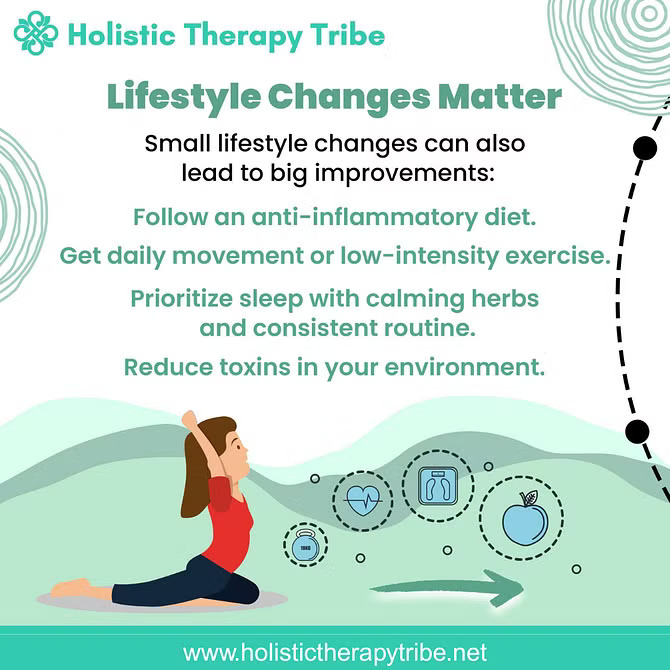Living with Chronic Lyme Disease can feel like an invisible battle. For many, it’s a daily struggle with symptoms that affect the mind, body, and spirit. While the early stages of Lyme disease can often be treated successfully with antibiotics, some people continue to experience serious symptoms long after treatment. This condition, often referred to as Chronic Lyme Disease, presents unique challenges that can dramatically change a person’s life.
In this article, we’ll dive into what it truly means to be living with chronic Lyme disease, the struggles people face, and the hope that still exists for healing.
What is Chronic Lyme Disease?
Chronic Lyme Disease, sometimes known as Post-Treatment Lyme Disease Syndrome (PTLDS), occurs when individuals continue to suffer from symptoms months or even years after initial infection and treatment.
Common symptoms include:
- Persistent fatigue
- Muscle and joint pain
- Cognitive issues like brain fog
- Sleep disturbances
- Mood disorders such as anxiety and depression
The exact cause is still being studied. Some theories suggest lingering bacterial infection, autoimmune reactions, or damage from the original infection as possible explanations.
No matter the cause, the impact on daily life is very real — and often misunderstood.
The Physical Challenges of Living with Chronic Lyme Disease
One of the most difficult aspects of living with chronic Lyme disease is managing the wide range of physical symptoms.
These symptoms can flare unpredictably, making it hard to plan activities or maintain a normal routine.
Fatigue is one of the most common and debilitating issues. Many people describe it as a deep exhaustion that sleep doesn’t fix. This fatigue can make it difficult to work, care for family, or even perform simple daily tasks.
Pain is another major challenge. Aching joints, headaches, and nerve pain can range from mild to excruciating and may shift around the body. This physical discomfort can significantly limit mobility and independence.
Over time, the physical symptoms can erode a person’s strength, both physically and emotionally, leading to feelings of frustration, sadness, and isolation.
The Emotional and Mental Health Challenges
Living with chronic Lyme disease doesn’t just impact the body — it deeply affects mental and emotional health too.
Many individuals experience:
- Depression
- Anxiety
- Feelings of hopelessness
- Social isolation
The unpredictability of symptoms can make it hard to maintain relationships, pursue career goals, or even participate in social events.
Friends and family may not always understand, which can add to the sense of isolation and loneliness.
Additionally, the cognitive symptoms (“brain fog”) associated with chronic Lyme can make tasks like concentrating, remembering things, or making decisions incredibly difficult. This mental cloudiness can affect self-confidence and lead to even more emotional distress.
It’s important to recognize that these feelings are a natural response to a very real illness — and seeking help is not a sign of weakness, but a vital part of the healing journey.
Navigating the Medical System
Another major challenge is finding appropriate medical care.
Because living with chronic Lyme disease is still controversial in some medical circles, many patients face skepticism or dismissal of their symptoms.
Some doctors may attribute ongoing symptoms to psychological causes or offer limited treatment options.
This experience can be disheartening and delay access to effective care.
Finding a Lyme-literate medical doctor (LLMD) — someone who specializes in treating persistent Lyme disease — is often crucial for patients seeking comprehensive, empathetic care.
However, these specialists can be expensive, and insurance may not always cover treatments, adding financial stress to the already heavy burden.
Coping Strategies for Living with Chronic Lyme Disease
While the challenges are real, there are ways to manage life with chronic Lyme disease and improve quality of life:
1. Build a Strong Support System
Having understanding friends, family members, or support groups can make a huge difference. Sharing experiences with others who “get it” can reduce feelings of isolation and offer valuable advice.
2. Advocate for Yourself
Learning to communicate clearly with healthcare providers and advocating for your needs is essential. Bring written lists of symptoms, ask questions, and don’t hesitate to seek second opinions.
3. Create a Gentle Daily Routine
Structure and predictability can help reduce stress. Simple routines like regular meal times, gentle exercise, mindfulness practices, and rest breaks can improve stability.
4. Focus on Holistic Healing
Many people find relief by combining medical treatments with holistic approaches such as:
- Anti-inflammatory diets
- Herbal supplements
- Detox therapies
- Acupuncture
- Mind-body techniques like meditation and yoga
A comprehensive approach often addresses not just physical symptoms but emotional well-being too.
Final Thoughts
Living with chronic Lyme disease can be overwhelming, but it’s important to remember that healing is possible.
Research is ongoing, and new treatment options continue to emerge. More awareness about chronic Lyme disease is leading to better understanding, improved therapies, and greater support for those affected.



